Self-Efficacy as a Moderator between Stress and Professional Burnout in Firefighters
Abstract
1. Introduction
- 1)
- How does self-efficacy moderate the relationship between occupational stress and burnout in a group of firefighters?
- 2)
- What is the extent of self-efficacy’s moderation of the relation between stress and specific dimensions of burnout, i.e., psychophysical exhaustion, deterioration in relations with others, lack of self-efficacy, and disappointment among firefighters?
2. Materials and Methods
- 1)
- Occupational burnout refers to subjective feelings about one’s job in relation to the level of psychophysical exhaustion, deterioration in relations with a person who is professionally assisted (e.g., an injured person or victim), lack of professional efficacy, and the level of disappointment (disillusion) among firefighters.
- 2)
- Perceived occupational stress describes a subjective evaluation of experienced stress relating to one’s actual situation in a professional context.
- 3)
- Sense of self-efficacy denotes a subjective appraisal of belief in one’s effective coping with difficult situations and obstacles.
2.1. Participants
2.2. Instruments
2.3. Procedure
2.4. Data Analysis
3. Results
3.1. Perceived Stress, Self-Efficacy, and Burnout Characteristics
3.2. Perceived Stress and the Sense of Self-Efficacy
3.3. Sense of Self-Efficacy and Psychophysical Exhaustion among Firefighters
3.4. Sense of Self-Efficacy and Relationship Deterioration among Firefighters
3.5. Sense of Self-Efficacy and Sense of Professional Inefficacy among Firefighters
3.6. Sense of Self-Efficacy and Disillusion among Firefighters
4. Discussion
5. Conclusions
Author Contributions
Funding
Acknowledgments
Conflicts of Interest
References
- Sawhney, G.; Jennings, K.S.; Britt, T.W.; Sliter, M.T. Occupational Stress and Mental Health Symptoms: Examining the Moderating Effect of Work Recovery Strategies in Firefighters. J. Occup. Health Psychol. 2018, 23, 443–456. [Google Scholar] [CrossRef] [PubMed]
- Kim, J.E.; Dager, S.R.; Jeong, H.S.; Ma, J.; Park, S.; Kim, J.; Choi, Y.; Lee, S.L.; Kang, I.; Ha, E.; et al. Firefighters, Posttraumatic Stress Disorder, and Barriers to Treatment: Results from a Nationwide Total Population Survey. PLoS ONE 2018, 13, E0190630. [Google Scholar] [CrossRef] [PubMed]
- Lee, J.H.; Lee, D.; Kim, J.; Jeon, K.; Sim, M. Duty-Related Trauma Exposure and Posttraumatic Stress Symptoms in Professional Firefighters. J. Trauma. Stress 2017, 30, 133–141. [Google Scholar] [CrossRef] [PubMed]
- Ângelo, R.P.; Chambel, M.J. The Reciprocal Relationship between Work Characteristics and Employee Burnout and Engagement: A Longitudinal Study of Firefighters. Stress Health 2015, 31, 106–114. [Google Scholar] [CrossRef] [PubMed]
- Katsavouni, F.; Bebetsos, E.; Malliou, P.; Beneka, A. The Relationship between Burnout, PTSD Symptoms and Injuries in Firefighters. Occup. Med. 2016, 66, 32–37. [Google Scholar] [CrossRef] [PubMed]
- Lourel, M.; Abdellaoui, S.; Chevaleyre, S.; Paltrier, M.; Gana, K. Relationships between Psychological Job Demands, Job Control and Burnout among Firefighters. N. Am. J. Psychol. 2008, 10, 489–496. [Google Scholar]
- Lee, J.Y.; Kim, S.Y.; Bae, K.Y.; Kim, J.M.; Shin, I.S.; Yoon, J.S.; Kim, S.W. The Association of Gratitude with Perceived Stress and Burnout among Male Firefighters in Korea. Personal. Individ. Differ. 2018, 123, 205–208. [Google Scholar] [CrossRef]
- Smith, T.D.; Hughes, K.; DeJoy, D.M.; Dyal, M.A. Assessment of Relationships between Work Stress, Work-Family Conflict, Burnout and Firefighter Safety Behavior Outcomes. Saf. Sci. 2018, 103, 287–292. [Google Scholar] [CrossRef]
- Kim, J.I.; Park, H.; Kim, J.H. The Mediation Effect of PTSD, Perceived Job Stress and Resilience on the Relationship between Trauma Exposure and the Development of Depression and Alcohol Use Problems in Korean Firefighters: A Cross-Sectional Study. J. Affect. Disord. 2018, 229, 450–455. [Google Scholar] [CrossRef]
- Bartlett, B.A.; Jardin, C.; Martin, C.; Tran, J.K.; Buser, S.; Anestis, M.D.; Vujanovic, A.A. Posttraumatic Stress and Suicidality Among Firefighters: The Moderating Role of Distress Tolerance. Cognit. Ther. Res. 2018, 42, 483–496. [Google Scholar] [CrossRef]
- Boffa, J.W.; Stanley, I.H.; Hom, M.A.; Norr, A.M.; Joiner, T.E.; Schmidt, N.B. PTSD Symptoms and Suicidal Thoughts and Behaviors among Firefighters. J. Psychiatr. Res. 2017, 84, 277–283. [Google Scholar] [CrossRef] [PubMed]
- Stanley, I.H.; Hom, M.A.; Spencer-Thomas, S.; Joiner, T.E. Suicidal Thoughts and Behaviors among Women Firefighters: An Examination of Associated Features and Comparison of Pre-Career and Career Prevalence Rates. J. Affect. Disord. 2017, 221, 107–114. [Google Scholar] [CrossRef] [PubMed]
- Kaurin, A.; Schönfelde, S.; Wessa, M. Self-Compassion Buffers the Link between Self-Criticism and Depression in Trauma-Exposed Firefighters. J. Couns. Psychol. 2018, 65, 453–462. [Google Scholar] [CrossRef] [PubMed]
- Krok, D. Can Meaning Buffer Work Pressure? An Exploratory Study on Styles of Meaning in Life and Burnout in Firefighters. Arch. Psychiatry Psychother. 2016, 1, 31–42. [Google Scholar] [CrossRef]
- Psarros, C.; Theleritis, C.; Kokras, N.; Lyrakos, D.; Koborozos, A.; Kakabakou, O.; Tzanoulinos, G.; Katsiki, P.; Bergiannaki, J.D. Personality Characteristics and Individual Factors Associated with PTSD in Firefighters One Month after Extended Wildfires. Nord. J. Psychiatry 2018, 72, 17–23. [Google Scholar] [CrossRef] [PubMed]
- Prati, G.; Pietrantoni, L.; Cicognani, E. Self-Efficacy Moderates the Relationship between Stress Appraisal and Quality of Life among Rescue Workers. Anxiety Stress Coping 2010, 23, 463–470. [Google Scholar] [CrossRef] [PubMed]
- Vaulerin, J.; Colson, S.S.; Emile, M.; Scoffier-Mériaux, S.; D’Arripe-Longueville, F. The Big Five Personality Traits and French Firefighter Burnout. J. Occup. Environ. Med. 2016, 58, e128–e132. [Google Scholar] [CrossRef]
- Locke, E.A. Social Foundations of Thought and Action: A Social-Cognitive View by Albert Bandura. Acad. Manag. Rev. 1987, 12, 169–171. [Google Scholar] [CrossRef]
- Bandura, A. Cultivate Self-Efficacy for Personal and Organizational Effectiveness. In Handbook of Principles of Organizational Behavior, 2nd ed.; Locke, E.A., Ed.; John Wiley & Sons, Ltd.: Chichester, West Sussex, UK, 2009; pp. 179–200. ISBN 978-0-470-74095-8. [Google Scholar]
- Bandura, A. Social Cognitive Theory: An Agentic Perspective. Annu. Rev. Psychol. 2001, 52, 1–26. [Google Scholar] [CrossRef]
- Bandura, A. Self-Efficacy: The Exercise of Control; W. H. Freeman: New York, NY, USA, 1997; pp. 1–211. ISBN 978-0-7167-2850-4. [Google Scholar]
- Juczyński, Z. Poczucie własnej skuteczności—teoria i pomiar. Acta Univ. Lodz. Folia Psychol. 2000, 4, 11–24. [Google Scholar]
- Linde, J.A.; Rothman, A.J.; Baldwin, A.S.; Jeffery, R.W. The Impact of Self-Efficacy on Behavior Change and Weight Change among Overweight Participants in a Weight Loss Trial. HEAL Psychol. 2006, 25, 282–291. [Google Scholar] [CrossRef] [PubMed]
- Miller, J.; Pilkonis, P.A.; Clifton, A. Self- and Other-Reports of Traits from the Five-Factor Model: Relations to Peronality Disorder. J. Personal. Disord. 2005, 19, 400–419. [Google Scholar] [CrossRef] [PubMed]
- Gecas, V. The Social Psychology of Self-Efficacy. Annu. Rev. Sociol. 1989, 15, 291–316. [Google Scholar] [CrossRef]
- Bakker, A.B.; Demerouti, E. Towards a Model of Work Engagement. Career Dev. Int. 2008, 13, 209–223. [Google Scholar] [CrossRef]
- Ogińska-Bulik, N.; Kaflik-Pieróg, M. Stres w pracy, poczucie własnej skuteczności a zespół wypalenia zawodowego u strażaków. Folia Psychol. 2003, 7, 37–47. [Google Scholar]
- Betoret, F.D. Stressors, Self-Efficacy, Coping Resources, and Burnout among Secondary School Teachers in Spain. Educ. Psychol. 2006, 26, 519–539. [Google Scholar] [CrossRef]
- Bresó, E.; Schaufeli, W.B.; Salanova, M. Can a Self-Efficacy-Based Intervention Decrease Burnout, Increase Engagement, and Enhance Performance? A Quasi-Experimental Study. High. Educ. 2011, 61, 339–355. [Google Scholar] [CrossRef]
- Brouwers, A.; Tomic, W. Teacher Burnout, Perceived Self-Efficacy in Classroom Management, and Student Disruptive Behaviour in Secondary Education. Curric. Teach. 1999, 14, 7–26. [Google Scholar] [CrossRef]
- Brouwers, A.; Tomic, W. A Longitudinal Study of Teacher Burnout and Perceived Self-Efficacy in Classroom Management. Teach. Teach. Educ. 2000, 16, 239–253. [Google Scholar] [CrossRef]
- Cherniss, C. Role of Professional Self-Efficacy in the Etiology and Amelioration of Burnout. In Professional Burnout: Recent Developments in Theory and Research; Schaufeli, W.B., Maslach, C., Marek, T., Eds.; Routledge: London, UK, 2017; pp. 135–149. ISBN 9781351854740. [Google Scholar]
- Friedman, I.A. Self-Efficacy and Burnout in Teaching: The Importance of Interpersonal-Relations Efficacy. Soc. Psychol. Educ. 2003, 6, 191–215. [Google Scholar] [CrossRef]
- Leiter, M.P. Burn-out as a Crisis in Self-Efficacy: Conceptual and Practical Implications. Work Stress 1992, 6, 107–115. [Google Scholar] [CrossRef]
- VanYperen, N.W. Informational Support, Equity and Burnout: The Moderating Effect of Self-Efficacy. J. Occup. Organ. Psychol. 1998, 71, 29–33. [Google Scholar] [CrossRef]
- Maslach, C.; Leiter, M.P. Early Predictors of Job Burnout and Engagement. J. Appl. Psychol. 2008, 93, 498–512. [Google Scholar] [CrossRef] [PubMed]
- Schneiderman, N.; Ironson, G.; Siegel, S.D. Stress and Health: Psychological, Behavioral, and Biological Determinants. Annu. Rev. Clin. Psychol. 2005, 1, 607–628. [Google Scholar] [CrossRef] [PubMed]
- Golonka, K.; Mojsa-Kaja, J.; Gawlowska, M.; Popiel, K. Cognitive Impairments in Occupational Burnout—Error Processing and Its Indices of Reactive and Proactive Control. Front. Psychol. 2017, 8, 1–13. [Google Scholar] [CrossRef]
- Golonka, K.; Mojsa-Kaja, J.; Marek, T.; Gawlowska, M. Stimulus, Response and Feedback Processing in Burnout—An EEG Study. Int. J. Psychophysiol. 2018, 134, 86–94. [Google Scholar] [CrossRef]
- Maslach, C.; Schaufeli, W.B.; Leiter, M.P. Job Burnout. Annu. Rev. Psychol. 2001, 52, 397–422. [Google Scholar] [CrossRef]
- Izydorczyk, B. Mental Condition and Specificity of Mental Disorders in a Group of Workers from Southern Poland: A Research Report. Med. Pr. 2018, 69, 13–28. [Google Scholar] [CrossRef]
- Paterson, J.L.; Sofianopoulos, S.; Williams, B. What Paramedics Think about When They Think about Fatigue: Contributing Factors. Emerg. Med. Australas. 2014, 26, 139–144. [Google Scholar] [CrossRef]
- Rushton, C.H.; Batcheller, J.; Schroeder, K.; Donohue, P. Burnout and Resilience among Nurses Practicing in High-Intensity Settings. Am. J. Crit. Care 2015, 24, 412–420. [Google Scholar] [CrossRef]
- Lemaire, J.B.; Wallace, J.E. Burnout among Doctors. BMJ 2017, 358, J3360. [Google Scholar] [CrossRef]
- Schwarzer, R.; Hallum, S. Perceived Teacher Self-Efficacy as a Predictor of Job Stress and Burnout: Mediation Analyses. Appl. Psychol. 2008, 57, 152–171. [Google Scholar] [CrossRef]
- Makara-Studzińska, M.; Tylec, A.; Kudlik, A.; Matuszczyk, M.; Murawiec, S. Analiza zjawiska wypalenia zawodowego w grupie lekarzy psychiatrów—przegląd badań. Psychiatria 2018, 15, 35–38. [Google Scholar]
- He, N.; Zhao, J.; Archbold, C.A. Gender and Police Stress: The Convergent and Divergent Impact of Work Environment, Work-Family Conflict, and Stress Coping Mechanisms of Female and Male Police Officers. Policing 2002, 25, 687–708. [Google Scholar] [CrossRef]
- Pawlak, A.; Gotlib, J.; Gałązkowski, R. The Analysis Outlining the Occurrence and Consequences of Accidents in the Work Environment of the Firefighters Employed by the State Fire Service in Poland in 2008–2013. Med. Pr. 2016, 67, 1–9. [Google Scholar] [CrossRef] [PubMed]
- Radko, J. Wtórny zespół stresu pourazowego w pracy strażaków i pracowników pogotowia ratunkowego—przegląd badań. Opusc. Sociol. 2013, 3, 73–82. [Google Scholar]
- Manning-Jones, S.; de Terte, I.; Stephens, C. The Relationship Between Vicarious Posttraumatic Growth and Secondary Traumatic Stress Among Health Professionals. J. Loss Trauma 2017, 22, 256–270. [Google Scholar] [CrossRef]
- Juczyński, Z. Skala uogólnionej własnej skuteczności—GSES. In Narzędzia Pomiaru w Promocji i Psychologii Zdrowia; Juczyński, Z., Ed.; Laboratory of Psychological Tests of the Polish Psychological Society: Warszawa, Poland, 2001; pp. 89–94. ISBN 83-88242-04-0. [Google Scholar]
- Juczyński, Z.; Ogińska-Bulik, N. Skala Odczuwanego Stresu—PSS-10. In Narzędzia Pomiaru Stresu i Radzenia Sobie ze Stresem; Laboratory of Psychological Tests of the Polish Psychological Society: Warszawa, Poland, 2009; pp. 11–22. ISBN 978-83-60733-43-1. [Google Scholar]
- Jaworowska, A. Massimo Santinello Link Burnout Questionnaire. Polska Normalizacja; Laboratory of Psychological Tests of the Polish Psychological Society: Warszawa, Poland, 2014; ISBN 978-83-63545-22-2. [Google Scholar]
- Santinello, M. Link Burnout Questionnaire, Manual; Giunti, O.S., Ed.; Organizzazioni Speciali: Firenze, Italy, 2007. [Google Scholar]
- Santinello, M. Link Burnout Questionnaire; Laboratory of Psychological Tests of the Polish Psychological Society: Warszawa, Poland, 2014; ISBN 978-83-63545-21-5. [Google Scholar]
- Cohen, S.; Kamarck, T.; Mermelstein, R. A Global Measure of Perceived Stress. J. Health Soc. Behav. 1983, 24, 385–396. [Google Scholar] [CrossRef] [PubMed]
- Hayes, A.F.; Scharkow, M. The Relative Trustworthiness of Inferential Tests of the Indirect Effect in Statistical Mediation Analysis: Does Method Really Matter? Psychol. Sci. 2013, 24, 1918–1927. [Google Scholar] [CrossRef] [PubMed]
- Dudek, B. Zespół zaburzeń po stresie urazowym wśród funkcjonariuszy PSP—uwarunkowania i skutki. Opracowanie systemu zapobiegania i ograniczania negatywnych konsekwencji tego zespołu; Scientific Report of Research Project No. PBZ 010-11; Nofer Institute of Occupational Medicine: Łódź, Poland, 2000. [Google Scholar]
- Oskwarek, P.P.; Tokarska-Rodak, M. Stres w środowisku pracy strażaków. Rozprawy Społeczne 2017, 11, 57–61. [Google Scholar] [CrossRef]
- Hobfoll, S. Conservation of Resources. A New attempt at conceptualizing stress. Am. Psychol. 1989, 44, 513–524. [Google Scholar] [CrossRef] [PubMed]
- Regehr, C.; Hill, J.; Knott, T.; Sault, B. Social Support, Self-Efficacy and Trauma in New Recruits and Experienced Firefighters. Stress Health 2003, 19, 189–193. [Google Scholar] [CrossRef]
- Sattler, D.N.; Boyd, B.; Kirsch, J. Trauma-Exposed Firefighters: Relationships among Posttraumatic Growth, Posttraumatic Stress, Resource Availability, Coping and Critical Incident Stress Debriefing Experience. Stress Health 2014, 30, 356–365. [Google Scholar] [CrossRef] [PubMed]
- Penz, M.; Stalder, T.; Miller, R.; Ludwig, V.M.; Kanthak, M.K.; Kirschbaum, C. Hair Cortisol as a Biological Marker for Burnout Symptomatology. Psychoneuroendocrinology 2018, 87, 218–221. [Google Scholar] [CrossRef] [PubMed]
- Golkar, A.; Johansson, E.; Kasahara, M.; Osika, W.; Perski, A.; Savic, I. The Influence of Work-Related Chronic Stress on the Regulation of Emotion and on Functional Connectivity in the Brain. PLoS ONE 2014, 9, E104550. [Google Scholar] [CrossRef] [PubMed]
- Duran, F.; Woodhams, J.; Bishopp, D. An interview study of the experiences of firefighters in regard to psychological contract and stressors. Empl. Responsib Rights J. 2018, 30, 203–226. [Google Scholar] [CrossRef]
- Benevene, P.; Ittan, M.M.; Cortini, M. Self-esteem and happiness as predictors of school teachers’ health: The mediating role of job satisfaction. Front. Psychol. 2018, 9, 933. [Google Scholar] [CrossRef]
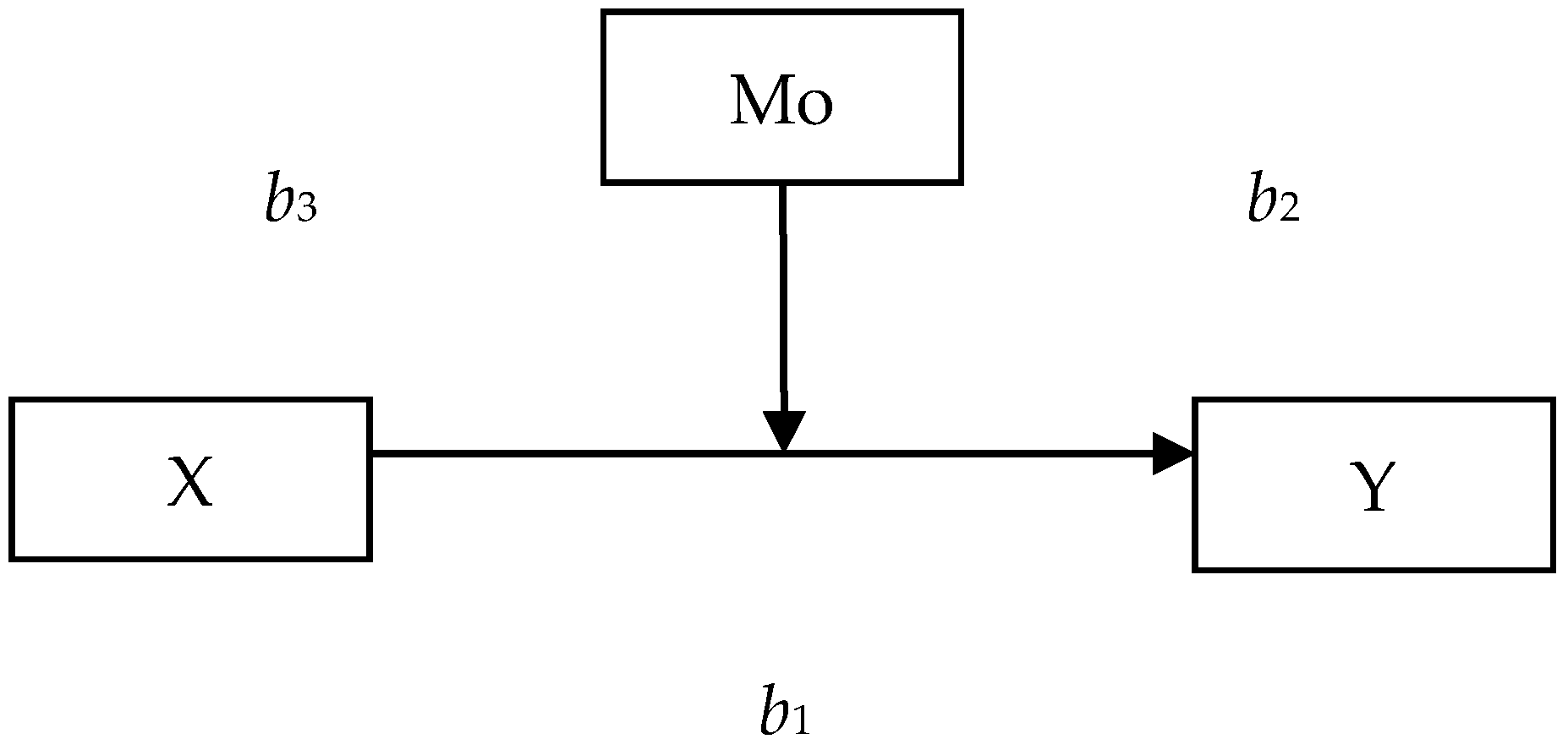
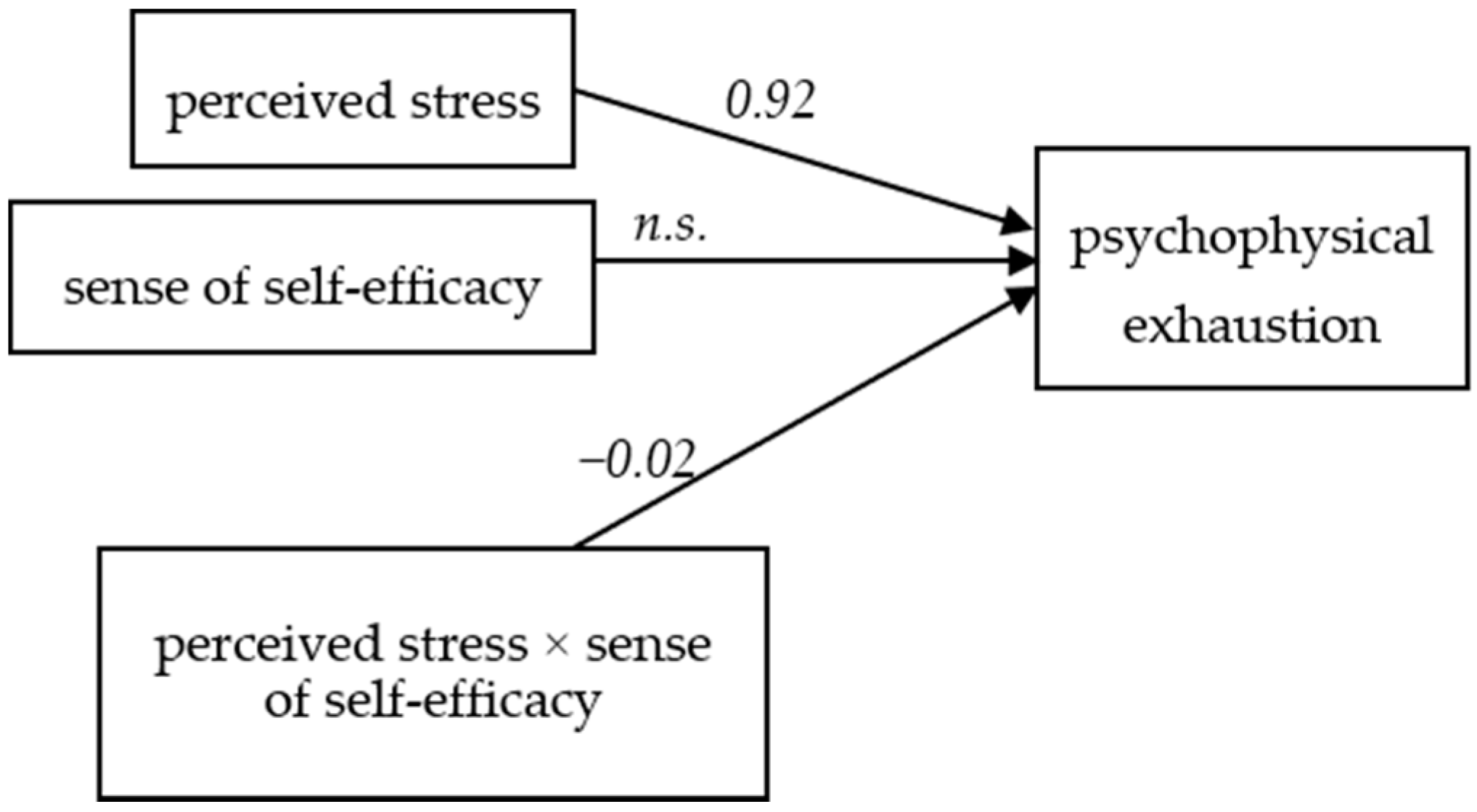
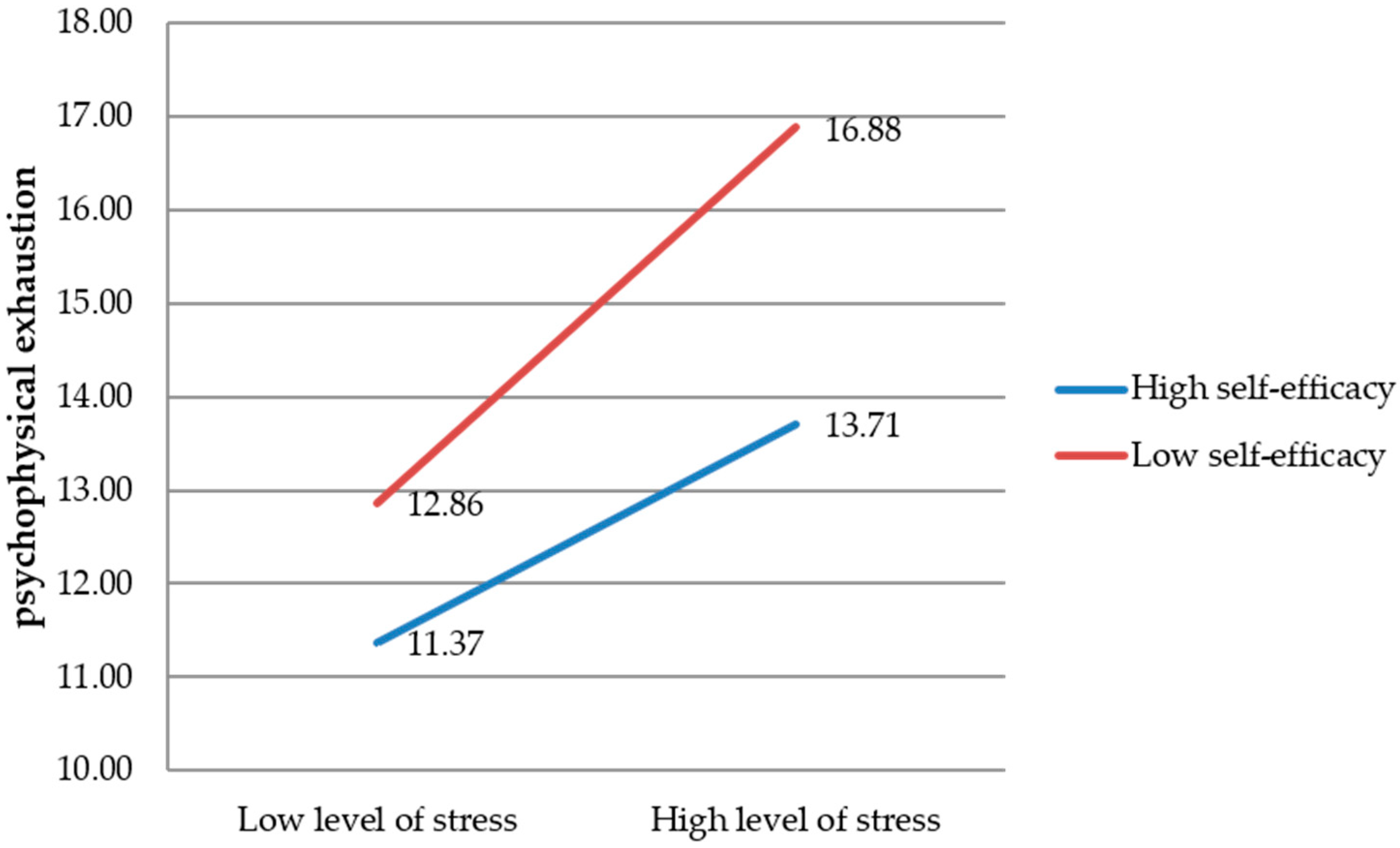
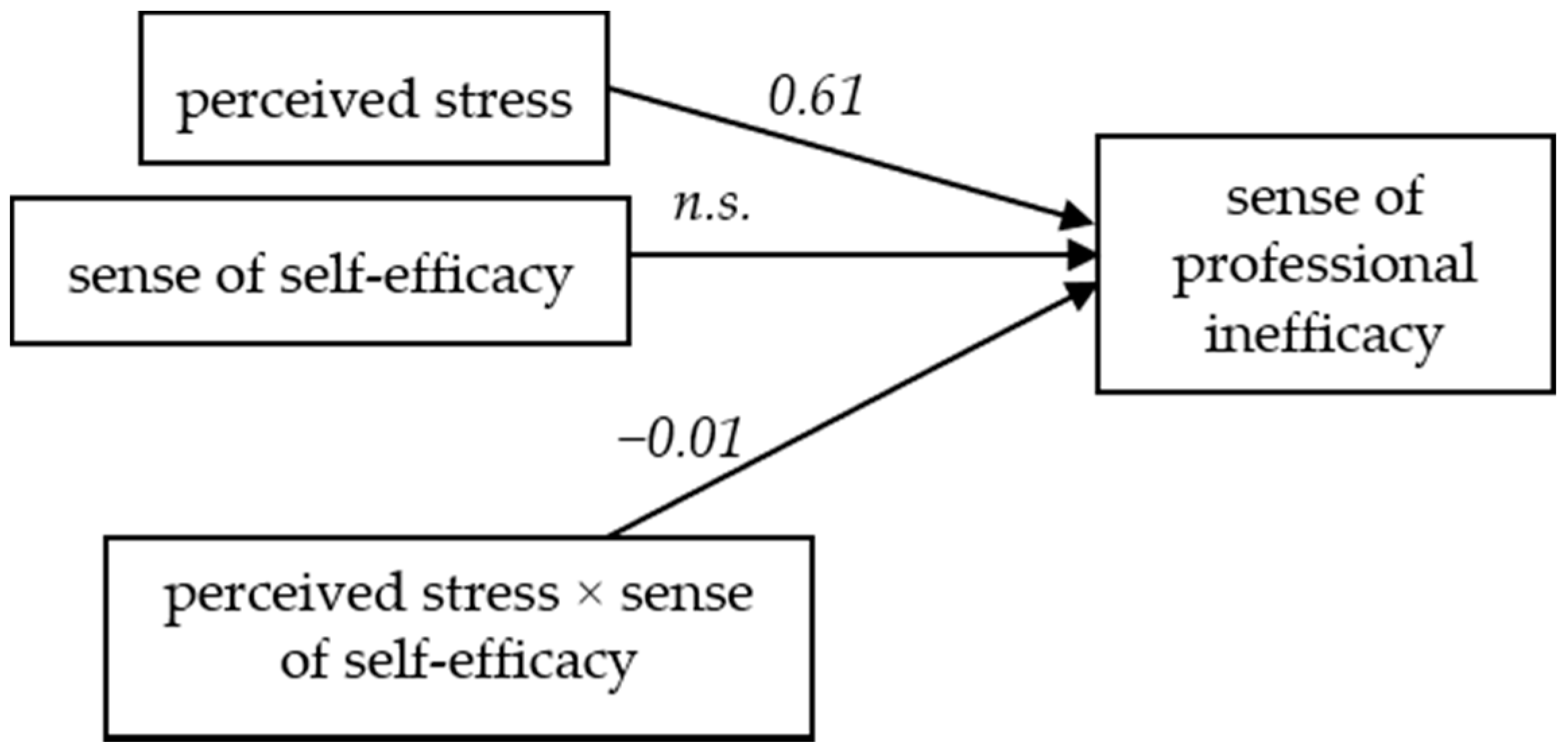
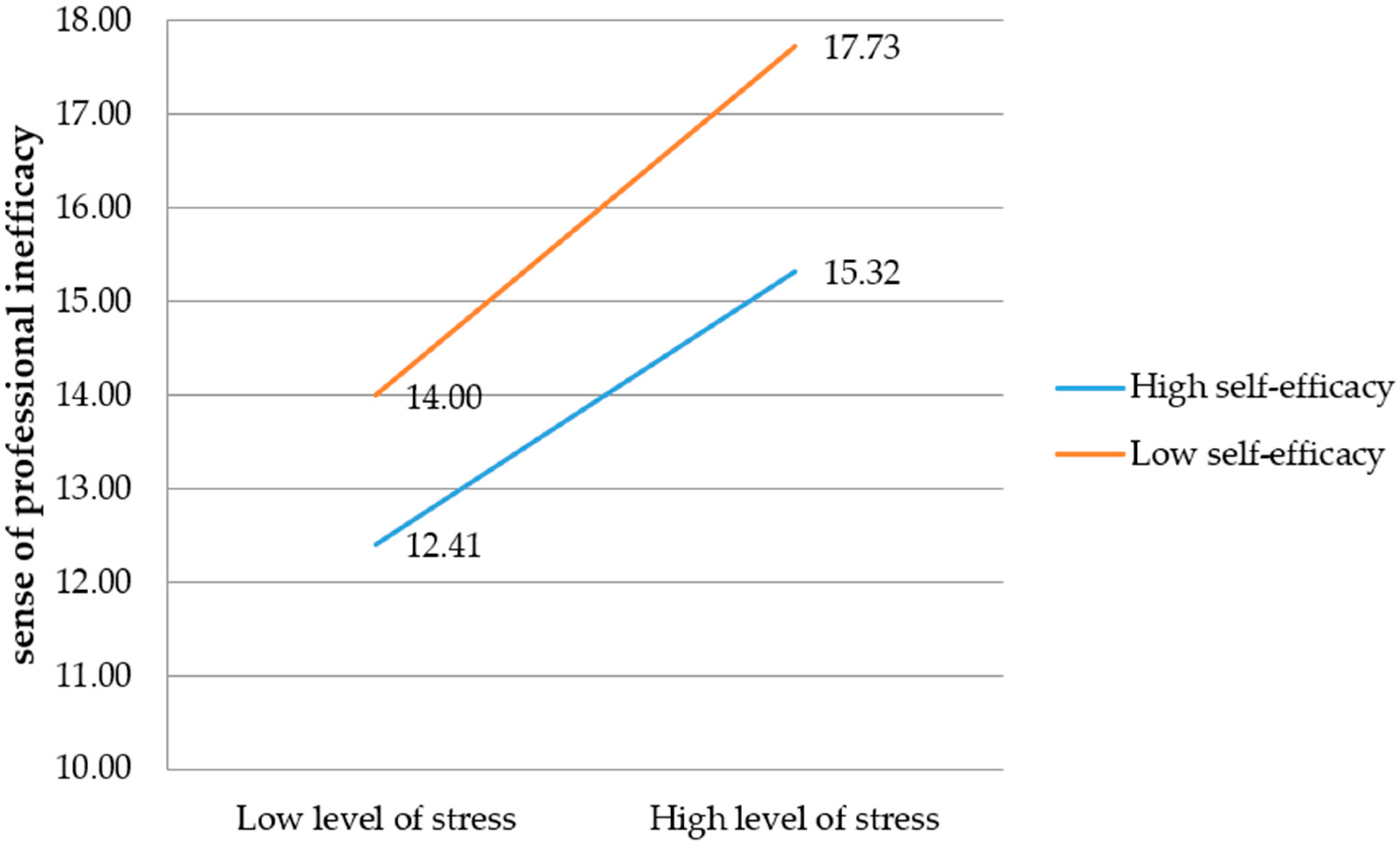
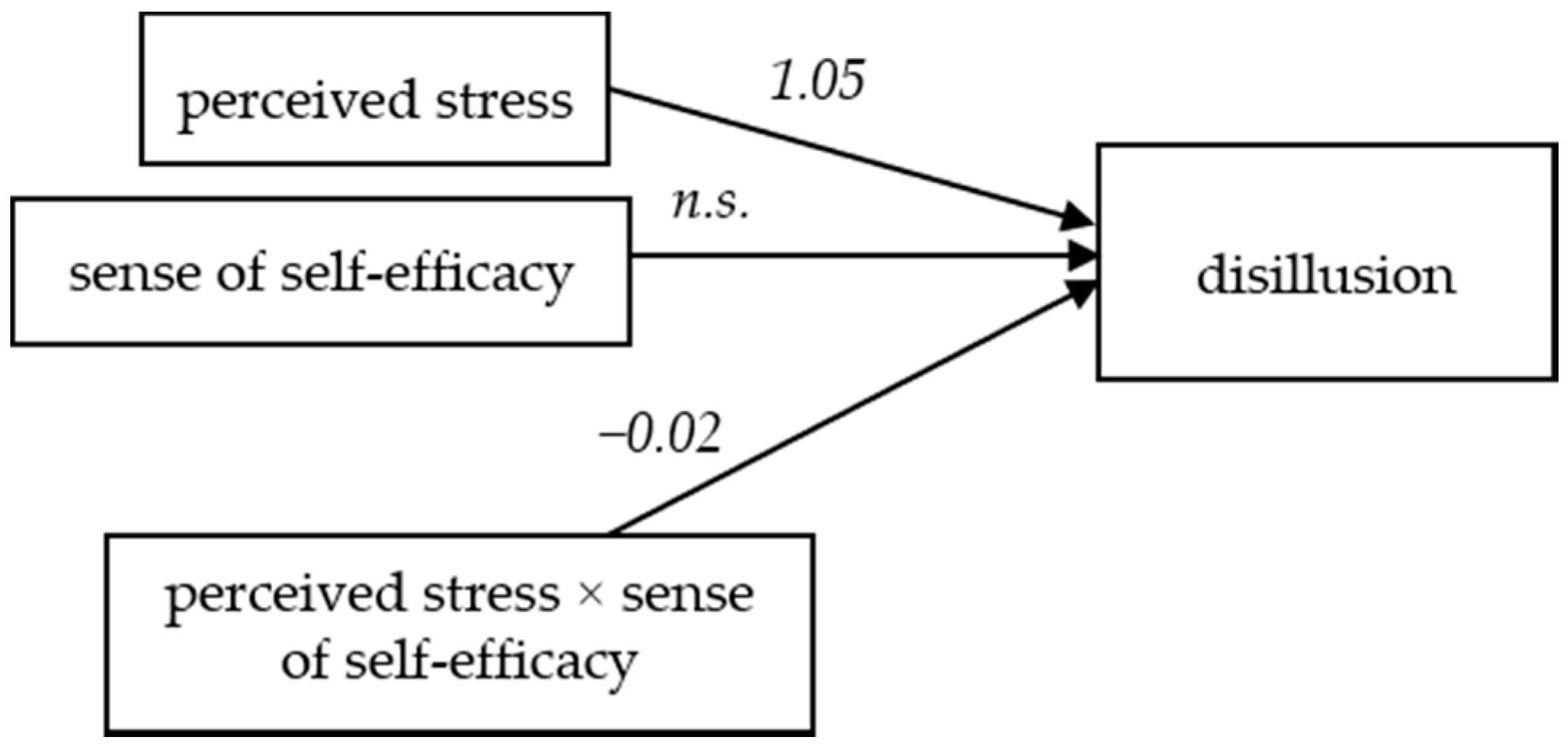
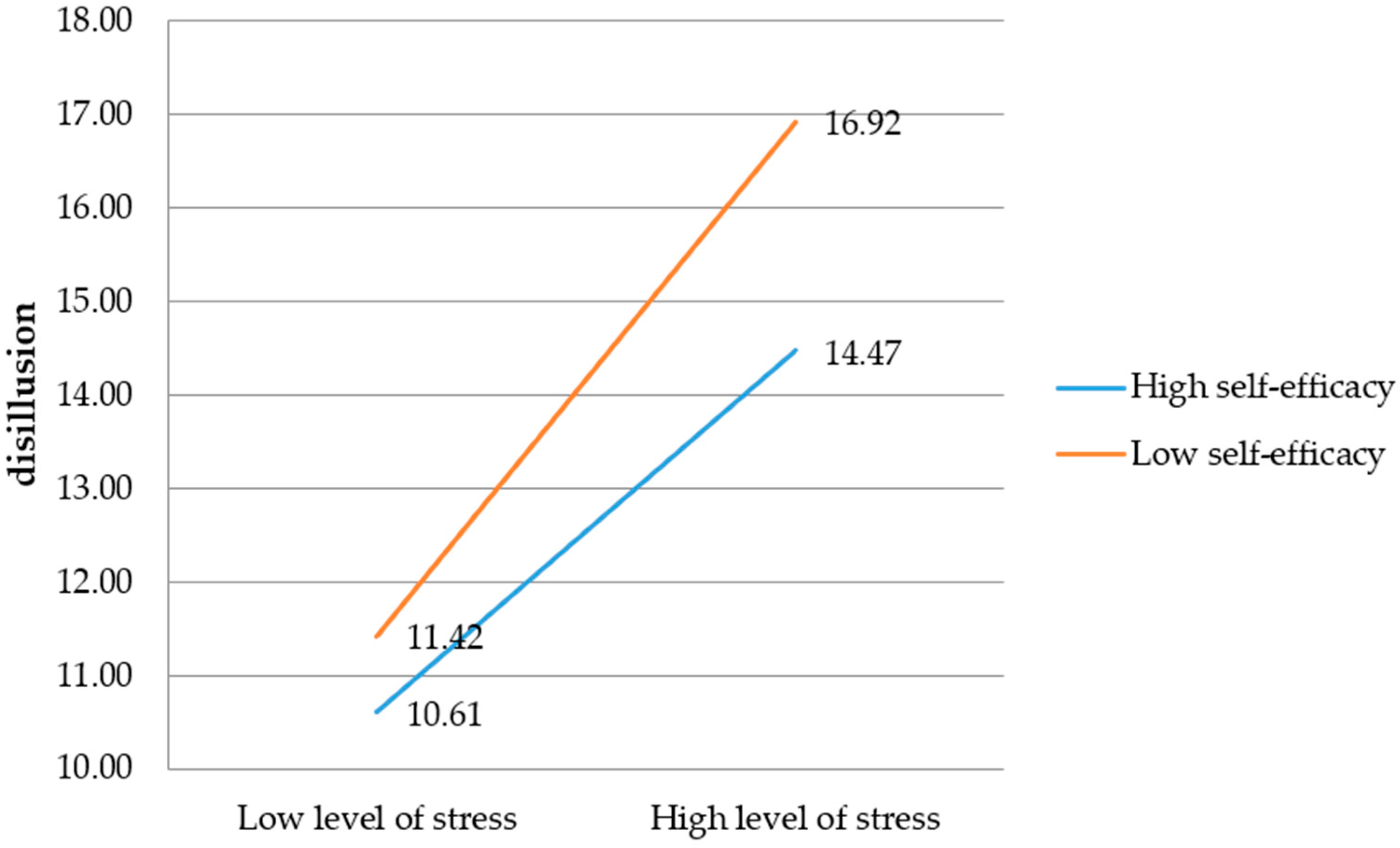
| Sample Characteristic | N | % |
|---|---|---|
| Gender | ||
| men | 580 | 100 |
| Age | ||
| 25 years old or less | 43 | 7.41 |
| 26–30 years | 104 | 17.93 |
| 31–39 years | 288 | 49.66 |
| 40–49 years | 133 | 22.93 |
| over 50 years | 12 | 2.07 |
| Marital status | ||
| single | 113 | 19.48 |
| married | 428 | 73.79 |
| cohabiting | 16 | 2.76 |
| divorced/separated | 22 | 3.79 |
| Children | ||
| 0 | 169 | 29.14 |
| 1 | 139 | 23.97 |
| 2 | 226 | 38.97 |
| 3 or more | 45 | 7.76 |
| Place of residence | ||
| countryside | 308 | 53.10 |
| city | 272 | 46.90 |
| Sample Characteristic | N | % |
|---|---|---|
| Education | ||
| secondary | 291 | 50.17 |
| post-secondary | 9 | 1.55 |
| higher | 280 | 48.28 |
| Work experience | ||
| 3 years or less | 45 | 7.76 |
| 4–8 years | 152 | 26.21 |
| 9–15 years | 238 | 41.03 |
| 16–25 years | 130 | 22.41 |
| over 25 years | 11 | 1.90 |
| Work system | ||
| shift work | 541 | 93.28 |
| day shifts | 36 | 6.21 |
| Professional status | ||
| executives | 386 | 66.55 |
| commanders | 193 | 33.28 |
| Scales | Mean Value | SD | Min. | Max. | Median | Asymmetry | Kurt | Z | p |
|---|---|---|---|---|---|---|---|---|---|
| PSS | 14.86 | 5.72 | 1 | 32 | 14 | 0.22 | −0.07 | 0.07 | <0.001 |
| GSES | 31.89 | 3.58 | 20 | 40 | 31 | 0.20 | 0.38 | 0.13 | <0.001 |
| LBQ | |||||||||
| psychophysical exhaustion | 15.71 | 5.61 | 3 | 33 | 15 | 0.57 | −0.08 | 0.09 | <0.001 |
| relationship deterioration | 16.55 | 4.40 | 4 | 30 | 16 | 0.10 | −0.33 | 0.08 | <0.001 |
| sense of professional inefficacy | 13.47 | 4.39 | 4 | 32 | 13 | 0.47 | 0.30 | 0.08 | <0.001 |
| disillusion | 13.71 | 6.13 | 5 | 34 | 13 | 0.68 | −0.07 | 0.10 | <0.001 |
© 2019 by the authors. Licensee MDPI, Basel, Switzerland. This article is an open access article distributed under the terms and conditions of the Creative Commons Attribution (CC BY) license (http://creativecommons.org/licenses/by/4.0/).
Share and Cite
Makara-Studzińska, M.; Golonka, K.; Izydorczyk, B. Self-Efficacy as a Moderator between Stress and Professional Burnout in Firefighters. Int. J. Environ. Res. Public Health 2019, 16, 183. https://doi.org/10.3390/ijerph16020183
Makara-Studzińska M, Golonka K, Izydorczyk B. Self-Efficacy as a Moderator between Stress and Professional Burnout in Firefighters. International Journal of Environmental Research and Public Health. 2019; 16(2):183. https://doi.org/10.3390/ijerph16020183
Chicago/Turabian StyleMakara-Studzińska, Marta, Krystyna Golonka, and Bernadetta Izydorczyk. 2019. "Self-Efficacy as a Moderator between Stress and Professional Burnout in Firefighters" International Journal of Environmental Research and Public Health 16, no. 2: 183. https://doi.org/10.3390/ijerph16020183
APA StyleMakara-Studzińska, M., Golonka, K., & Izydorczyk, B. (2019). Self-Efficacy as a Moderator between Stress and Professional Burnout in Firefighters. International Journal of Environmental Research and Public Health, 16(2), 183. https://doi.org/10.3390/ijerph16020183






